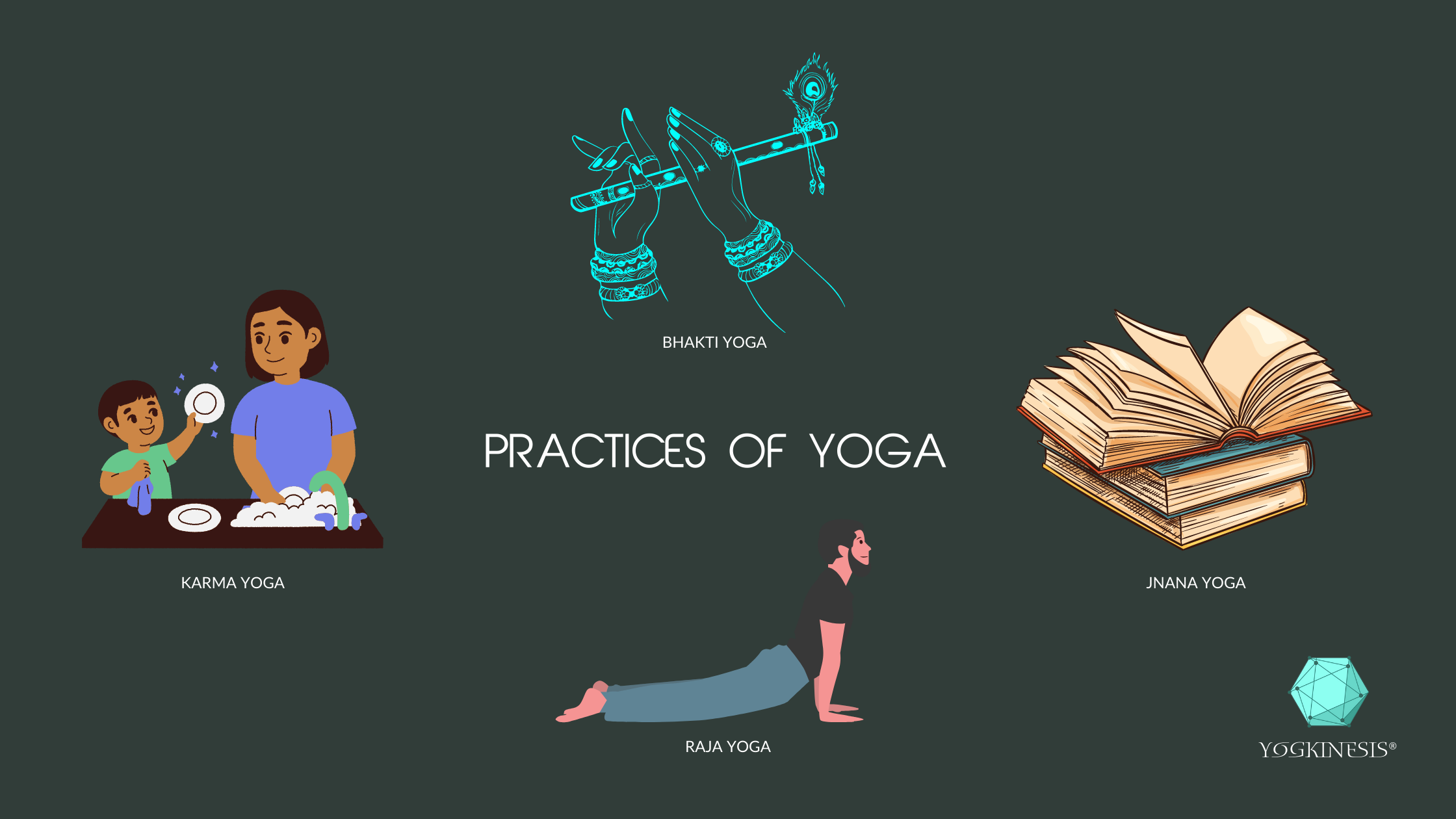
4. Raja Yoga
Raja Yoga is the path of systematic analysis and control of the mind. Raja Yoga was first described in the Yoga Sutras of Patanjali, which is considered the foundational text of classical yoga. Hatha Yoga, Kundalini Yoga, and Mantra Yoga are all parts of Raja Yoga. Raja Yoga emphasizes the practice of meditation as a means of quieting the mind and achieving self-realization. The ultimate goal of Raja Yoga is to attain Samadhi, a state of deep concentration and inner absorption, where the individual experiences a sense of oneness with the universe.
The eight limbs of Raja Yoga, as described by Patanjali, are Yama (ethical disciplines), Niyama (observances), Asana (physical postures), Pranayama (breath control), Pratyahara (sense withdrawal), Dharana (concentration), Dhyana (meditation), and Samadhi (union with the divine). Practicing Raja Yoga can help individuals develop greater self-awareness, mental clarity, and emotional stability. It can also improve physical health and overall well-being.
Raja Yoga is the kind of yogic practice in which the yogic practice which we live on the eightfold steps to recoil the Kundalini force of man and rise to the highest consciousness. Man has six centers of energy. The first one is the Muladhara chakra. There rests the Kundalini or the serpentine force in a dormant way. If man undergoes sadhana or systematic progress in tapasya of eightfold (or the ashtanga yoga), then the dormant 3-coiled snake force recoils and the snake force rises over to the different center of forces or chakras and finally reaches sahasrara. The chakras are muladhara, swadisthana, manipura, anahata, visuddhi, ajna and the sahasrara. The path of Kundalini or the snake is in the middle cord which is called Sushumna. The left cord is Ida or the moon's nadi, and the right one is Pingla the Surya/nadi. One attains various siddhis when one enters the chakras one after the other. These chakras are connected by the above-mentioned three nadis the sadhaka using Pranayama arouses the Kundalini (or the serpentine force) which runs through the Susanna (the middle channel) and finally united at sahasrara chakras. When Prana reaches the particular chakra some realization takes place. But reaching Sahasrara the sadhaka attains the highest goal which is self-realization which is the place of eternal truth, knowledge, and bliss. In other words, it is a journey of the individual being to the Supreme Being.
The most comprehensive text of Hatha yoga is the Hatha Yoga Pradipika by Yogi Swatmarama. This work is nonetheless derived from older Sanskrit texts on yoga besides Yogi Swatmarama's own yogic experiences. It includes information about shatkarma (purification), asana (postures), Pranayama (subtle energy control), chakras (centers of energy), Kundalini (instinct), bandhas (muscle force), kriyas (techniques; manifestations of Kundalini), Shakti (sacred force), nadis (channels), and mudras (symbolic gestures) among other topics. Many modern schools of Hatha yoga derive from the school of Sri Tirumalai Krishnamacharya, who taught from 1924 until he died in 1989. Among his students prominent in popularizing yoga in the West were Sri K. Pattabhi Jois, famous for popularizing the vigorous Ashtanga Vinyasa Yoga style, B.K.S. Iyengar who emphasizes alignment and the use of props, Indra Devi and Krishnamacharya's son T.K.V. Desikachar who developed the Viniyoga style. Desikachar founded the Krishnamacharya Yoga Mandiram in Chennai, to make available the heritage of yoga as taught by Krishnamacharya. Traditional Hatha yoga is a holistic yogic path, including disciplines, physical postures (asana), purification procedures (Kshatriya), poses (mudras), breathing (Pranayama), and meditation. The Hatha yoga predominantly practiced around the globe consists of mostly Asanas understood as physical exercises. It is also recognized as a stress-reducing practice. Hatha yoga is one of the two branches of yoga that focuses on the physical culture, the other one being raja yoga. Both of these are commonly referred to as sadhana yoga. The main difference is that raja yoga uses Asanas mainly to get the body ready for prolonged meditation, and hence focuses more on the meditative asana poses: Lotus Posture (Padmasana), Accomplished Posture (siddhasana), Easy Posture (sukhasana) and Pelvic Posture (Vajrayana). Hatha yoga utilizes not only meditative postures but also cultural postures. Similarly, raja yoga's use of Pranayama is also devoid of extensive locks (bandhas). Hatha represents opposing energies: hot and cold (fire and water, following similar concepts as yin-yang), male and female, and positive and negative. Hatha yoga attempts to balance mind and body via physical postures or "Asanas", purification practices, controlled breathing, and the calming of the mind through relaxation and meditation.